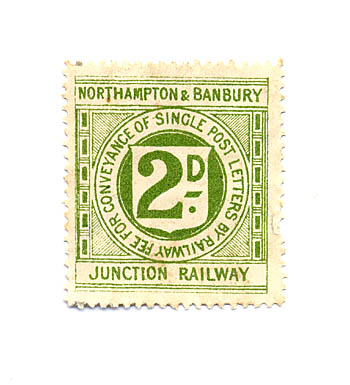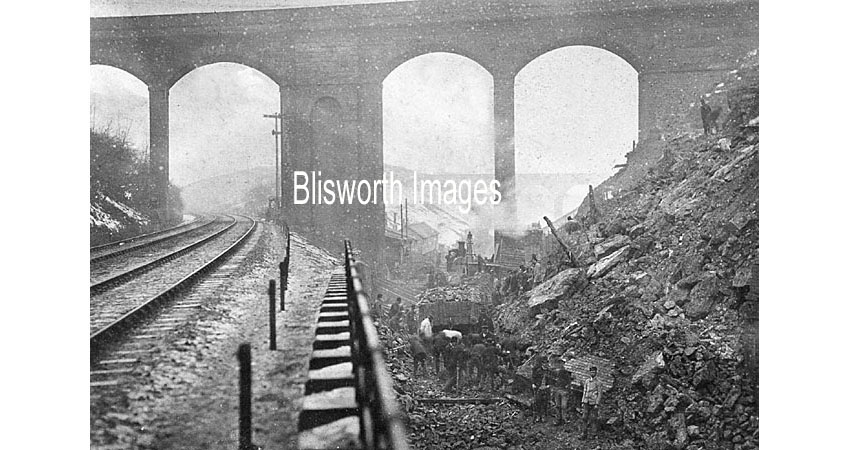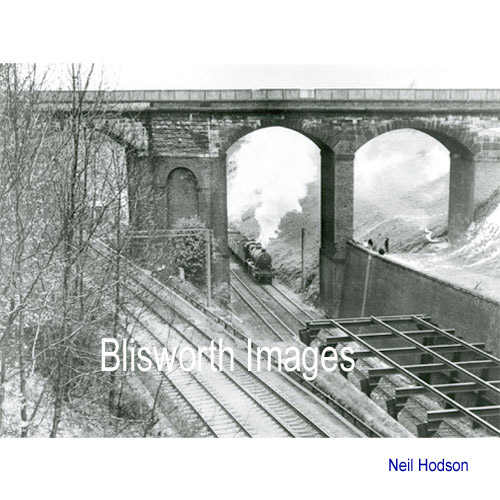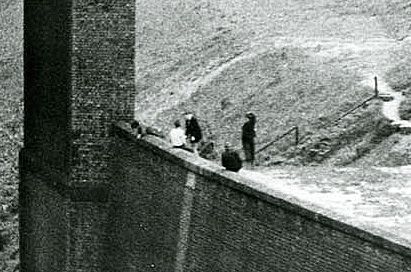|
Railways Part IV , Blisworth, Northamptonshire, UK. All pictures are presented at relatively low resolution. Any interest in copies of a picture at a higher resolution (ie. clarity) should be directed through contacts given in the Blisworth "Round and About" parish council publication or using the comment form on the home page. In some cases the pictures are not available due to copyright restrictions. However, permission has been obtained, where possible, to include them here. Printed below each image is the photographer's name, if known. |
|
|
Back to INDEX page Part I Part II Part III This is Part IV |
|
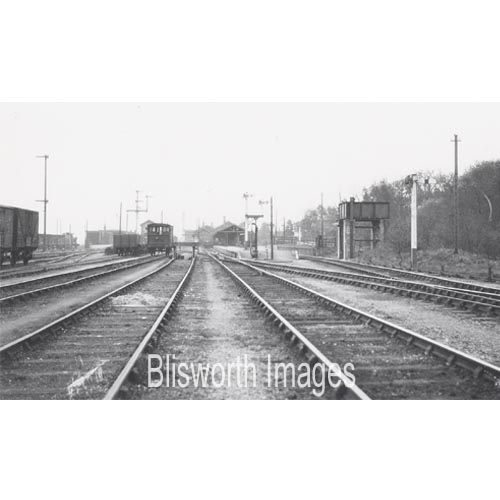 |
27-42 A general view of the station from the north dated 1930s/40s. Main line station to the left and SMJ to the right. Note the SMJ water tower to the right. |
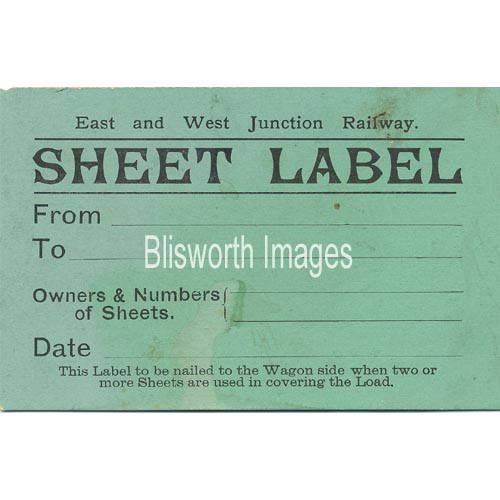 |
27-42a Wagon label for the East and West Junction Railway (forerunner of the SMJ). dated 1864 to 1908. |
|
|
The railway's own postal system! The
stamp is the fee for postage on the Northampton & Banbury Junction
Railway.
Explanation of the alternative names for the railway which terminates at Blisworth, going east via Tiffield: N&BJ railway was the name taken in 1870 by the company in charge of the western spur from Blisworth. The East and West J railway, mentioned above connected Towcester with Stratford-on Avon and once combined with the N&BJ formed the SMJ, Stratford-on-Avon & Midlands Junction railway. It is suggested you get the book by Aurthur Jordan out of the library if you require more detail, published 1982. |
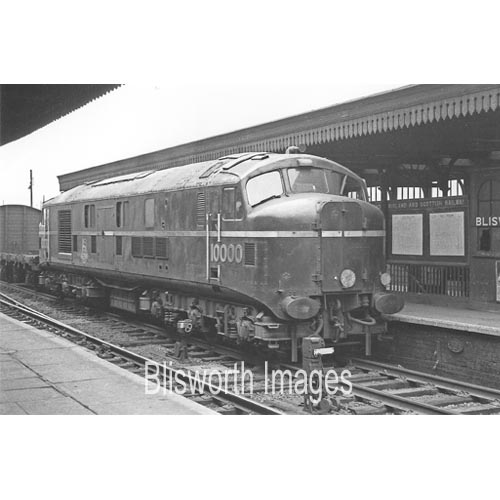 |
27-43 One of the first L.M.S. built diesels locos built in 1947 just before nationalisation (they were 10000 and 10001) drawing a freight train in Blisworth Station c.1950. These were the early years of British Rail, the original lion and wheel emblem can be seen on the side of the loco. |
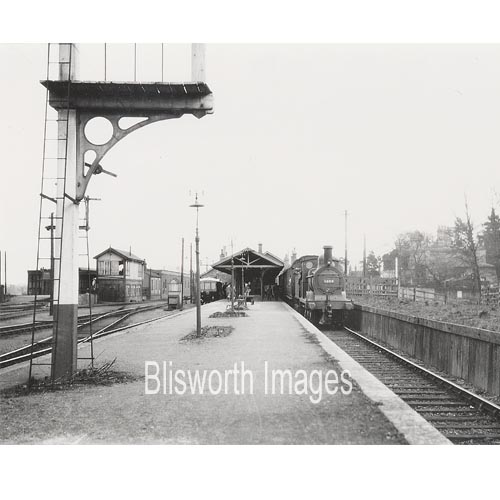 |
27-44 An SMJ train with a 3F 0-6-0 loco at the SMJ platform. Note the early rail-car on the other platform - perhaps the Ro-Railer - date c. 1930s. |
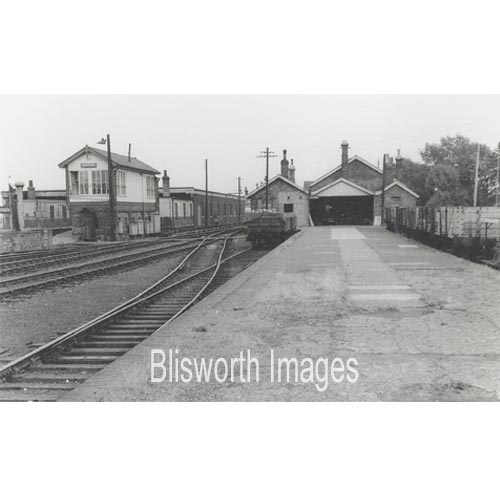 |
27-45 General view of the SMJ yard at Blisworth with the main
station signal box to the left and the station entrance building (gable
end) in the distance straight ahead. Date 1950s.
The water column and leather hose can been seen on the extreme left of the picture. It was used to to provide a rapid recharge of water for the steam locos in the relatively recent times. Water storage was in the large tank on the top of the "Tank House", see 27-11 in Part II, and presumably there must have been a large diameter connecting pipe from the tank to the leather hose some 100s of yards long. |
|
Footnote: The
Tank House mentioned in the above caption was about 500 yards south of the station.
Immediately north of the Station signal box was a large metal column, removed by 1970 when photo
27-21 was taken although what looks like its base is there. The column,
as can be just discerned above, had a large leather hose through which a huge quantity of water could flow. The practice was for the engine to stop with its tender opposite the column, the fireman would climb on top of the tender, open a cover and insert the leather
hose and the driver then turned a hand wheel on the ground which released the flow of water into the tender. Care was necessary when the tender was full as any overflowing would soak the fireman
- there was no health and safety in those days! |
|
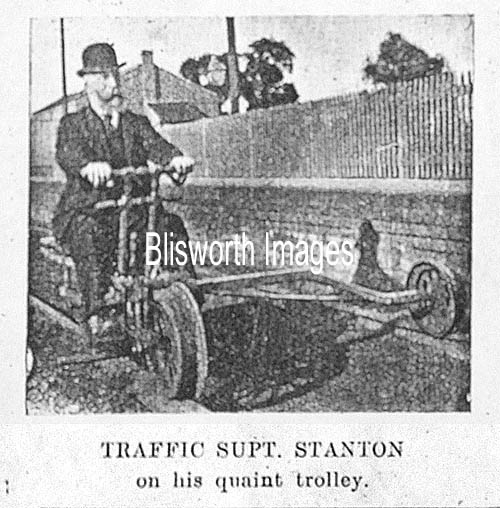 |
Mr Stanton, the superintendent for the SMJ railway, c1900, had his office
at Blisworth and used an interesting mode of transport - one that could
only have been used on a rather quiet branch line!
He was approached by letter in 1907 in regard to collecting railway stamps (yes, rail memorabilia was collected that far back!) and the reply is straight forward enough. Copy of letter from B. Smeathers. |
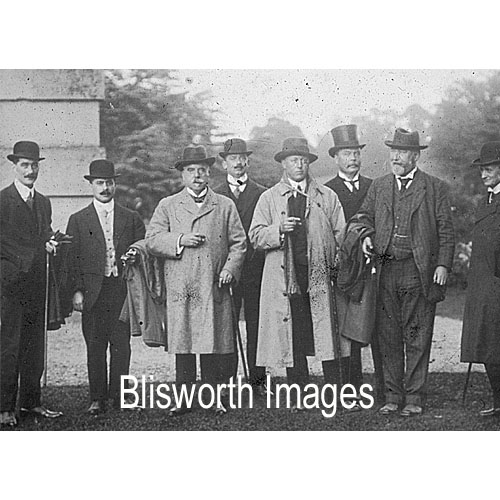 |
Gary Loveday has found this photo also in the Arthur Jordan book (1982)
on the SMJR the same photo is in there and captioned:
"SMJ directors at Compton Verney House, home of Lord Willoughby de Broke, in 1912. The party travelled in the Directors' saloon from Stratford-on-Avon to Towcester and back and dined at the Shakespeare Hotel in the evening. On the following day the entire staff of the SMJ was transported in two special trains to Kineton for Compton Verney, where they were entertained by Lord Willoughby. From left to right: G. H. Payton (Bank Manager), A. E. Diggins (General Manager), W. H. Bell (Parliamentary Agent), Russell Willmott (Engineer), S. Herbert (Deputy Chairman), C. S. M. Baynes (Solicitor - elsewhere named as C. Bompass), Henry Willmott (Chairman), T. H. Compton (contractor for the E&WJR and former Chairman of the East & West)." There is no photo credit. |
|
|
|
| Picture of the landslip which closed the Northampton loop line in 1890. After much rain, the under-stratum of weak clay beneath limestone layers gave way. The under-stratum is a feature that is exposed by the original excavation only at the north end of Roade cutting. The side was shored up with heavy walling and heavy steel girders were positioned to support the shoring. The girders can be seen in the next three pictures. Photograph - courtesy Roade Historical Society. | |
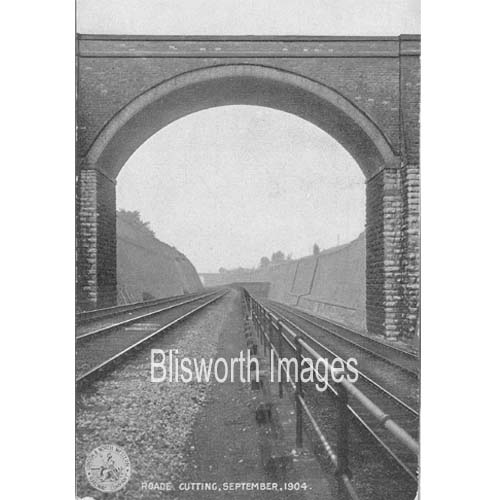 |
27-46 An early L.N.W.R. official postcard of the Roade Cutting dated 1904.
NB. There is a 1900 picture of Roade Railway station in the "Neighbouring Villages" section. |
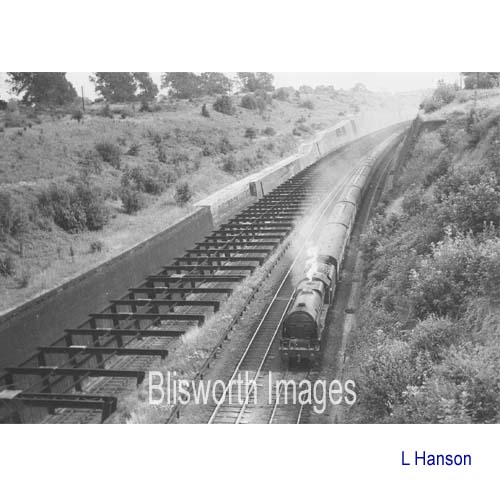 |
27-47 The Roade Cutting from the 'black bridge' 27.07.1950. The engine is one of the last un-rebuilt Royal Scot 46156 South Wales Borderer on a northbound express, note the heavy nature of the train (15 plus coaches) probably over 500 tons, being typical loads for this era when usage of trains was still high and car ownership relatively uncommon. |
|
|
By kind permission of the photographer Neil
Hodson, Kingsthorpe. The photograph has been on a roundabout route
in getting onto this website and finally being given the correct
attribution.
Note the blown-up portion that shows a group of boys engaged in train-spotting. One of them is Andy Newbery who has contributed photographs and narrative to this website (you could use the search facility on the home page). He says "I actually remember seeing a guy on the wall opposite us when train-spotting, so that must have been Neil Hodson! I think you'll find the lad with fair hair with his back to the camera, in the foreground is me! I am sitting on the wall, typical for me, leaning over to get the front number of the 8F goods loco labouring the last half mile of 1 in 200 up from Northampton with a coal train of 20 ton 4 wheeled tippler wagons weighing between 500 and 1000 tons, it would almost certainly be doing almost walking pace at this point and us lads are about to get a face-full of hot steam and smoke...magic!..." After 50 years he still sounds enthusiastic! |
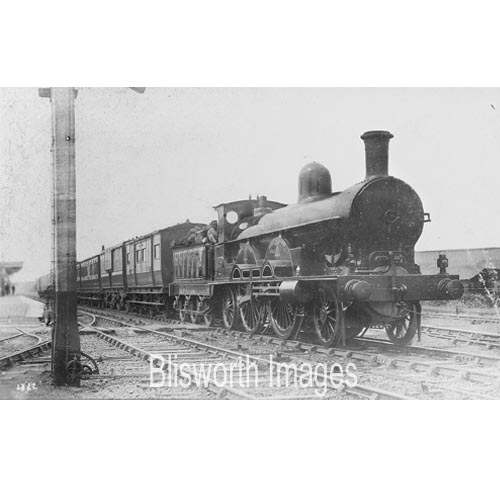 |
27-48 An L.N.W.R. Webb compound 2-2-2-2 loco drawing a south-bound express through Blisworth Station - early 20C. |
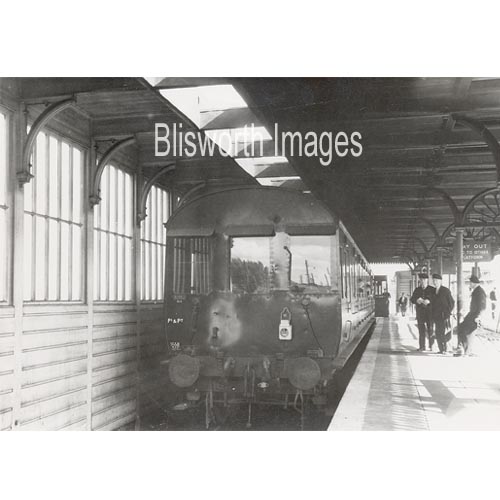 |
27-49 A Blisworth
'Motor-train' c. 1950s in Blisworth Station Northampton Bay. These
trains commuted from Northampton and from Leamington via Daventry. They generally
comprised a tank engine and two coaches.
The last train to leave this platform was attended by quite a crowd and George Freeston, local historian, made a tape recording of the event. Its duration is 7 minutes. Playing the track on your computer depends on configurations - try 'play in default player'. You might prefer to just download mp3 audio file (7MB). |
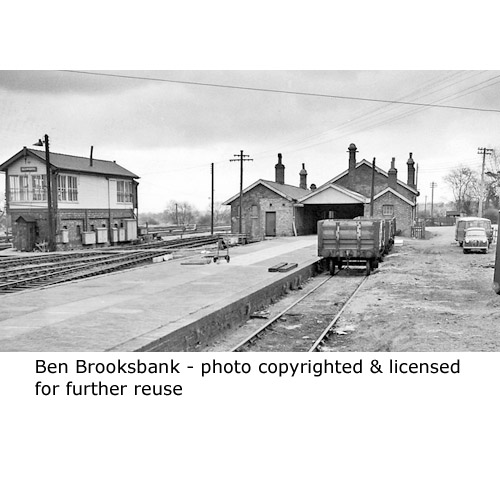 |
View eastward, towards Bletchley and London on the West Coast Main Line. To the left of the signal box a branch (closed 4/1/60) ran to nearby Northampton. The station was closed to passengers that day, to goods later (6/7/64). At the date of the photograph (4/62) the main line station buildings had already been removed: those on the right were the remains of the terminus of the ex-Stratford-on-Avon & Midland Junction line, which ran via Towcester to Stratford and Broom Junction until 7/4/52, with a branch from Towcester to Banbury until 27/4/51. |
